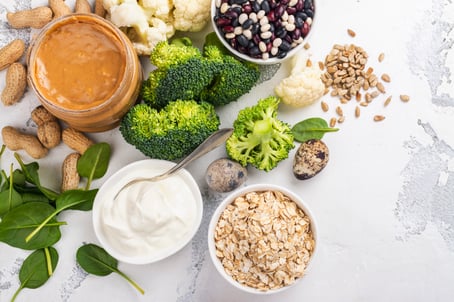 Mondays can be hard enough, getting back into the swing of things after a much-too-short weekend. The last thought on your mind is what to cook for dinner, right? You might go out to eat instead, pick up carryout, or eat a frozen pizza for the most painless dinner prep possible. However, what if you opt for something that is not only easy for you, but also healthy for you and the planet?
Mondays can be hard enough, getting back into the swing of things after a much-too-short weekend. The last thought on your mind is what to cook for dinner, right? You might go out to eat instead, pick up carryout, or eat a frozen pizza for the most painless dinner prep possible. However, what if you opt for something that is not only easy for you, but also healthy for you and the planet?
Meatless Monday is a global movement with this message: one day a week, cut the meat. The goal is to reduce meat consumption by 15% for personal health and the health of the planet. Did you know that over 40 countries participate in Meatless Monday? Check out these easy tips on how to get your Meatless Monday started!
Breakfast
Breakfast, known as the most important meal of the day, is one of the easiest times to make a meatless meal. I understand it can be hard to get out the door on time in the morning, especially if you are also trying to get kids and pets taken care of. Opt for a carbohydrate and a protein at breakfast to create a breakfast that satisfies you throughout the morning.
Meal Ideas
- Oatmeal + nuts/nut butter + fruit
- Whole-grain toast + peanut butter + banana slices
- Yogurt (try Silk soy yogurt) + granola + nuts
- Smoothies
Staples
Rolled oats, variety of fruit (apple, banana, frozen berries), nuts/nut butters, plant milk, yogurt variety (try a plant milk option!), whole-grain bread.
Lunch and Dinner
I’ve combined these two meals because, honestly, what’s easier than eating dinner leftovers for lunch? Just make sure to cook an extra batch the night before. If you’re not a fan of day-old food, I have a few fresh ideas as well!
Meal Ideas
- Veggie wraps (hummus + spinach + bell peppers + tomato + avocado)
- Tofu stir-fry (baked ½-inch cubes of extra-firm tofu + brown rice + assorted veggies)
- Fajitas (peppers + onion + black beans + salsa)
- PBJ (fresh fruit slices + peanut butter + side of carrot sticks and hummus)
- Veggie chili (beans + assorted spices + cornbread)
Staples
Canned beans (black/garbanzo/kidney/pinto beans, etc.), hummus, whole-grain bread, variety of veggies (peppers, onion, tomato, carrots), fruit (apples, berries), extra-firm tofu.
Take Care of the Planet and Yourself
It’s easy to get overwhelmed thinking about switching up your usual routine, but I promise it will be so worth it! You might even find that you actually love chili without the meat or hardly notice it missing when you begin to experiment with the vast array of spices that plant-based cooking uses. Make your grocery list and stock your kitchen with these staples and you’ll be good to go! The year 2020 is all about addressing the needs of the planet as well as ourselves. A plant-based diet has never been easier to try!
This blog was written by Lindsey Hehman, MA, RD, CD. To learn more about the NIFS bloggers, click here.



 Vegans
Vegans